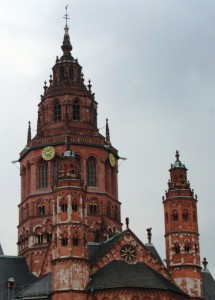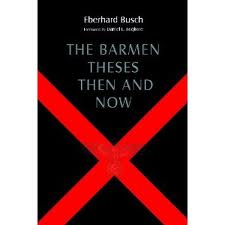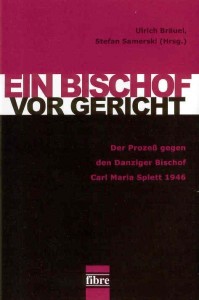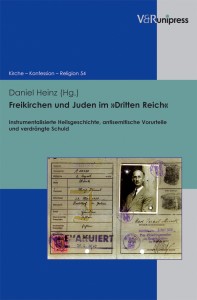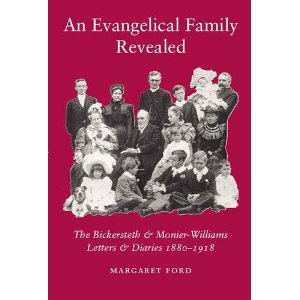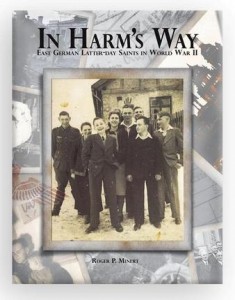ACCH Quarterly Vol. 17, No. 4, December 2011
Article Note: Roman Catholics and the Establishment of the Third Reich
Larry Eugene Jones, “Franz von Papen, Catholic Conservatives, and the Establishment of the Third Reich, 1933-1934,” Journal of Modern History 83, no. 2 (June 2011): 272-318, and Martin R. Menke, “Misunderstood Civic Duty: The Center Party and the Enabling Act,” Journal of Church and State 51, no. 2 (Spring 2009): 236-264.
Suzanne Brown-Fleming, United States Holocaust Memorial Museum[1]
For the German Catholic Church—her princes, her politicians, her clergy and her laity—the period from January 30, 1933, to June 30, 1934 was replete with decisions which would impact and even dictate the path of her faithful until May 8, 1945. During these seventeen months until the shock of the so-called Blood Purge, most dramatic and decisive were the last weeks of March and the first weeks of April 1933.
On March 23, the Reichstag passed the Enabling Law (Ermächtingungsgesetz), or formally, the Law to Relieve the Distress of Volk and Reich (Gesetz zur Behebung der Not von Volk und Reich) by a vote of 441-94. Only the Social Democrats voted against the law which abolished democracy and the constitutional state.[2] On that same day, in his speech to the Reichstag, German Chancellor Adolf Hitler promised to “respect all treaties between the churches and the states” and stated that the “rights” of the churches would “not be infringed upon.”[3] In response, on March 28, the Fulda Bishops’ Conference (Fuldaer Bischofskonferenz) lifted the ban on Catholic membership in the NSDAP.[4]
That same day (March 28), Nazi party leadership ordered a boycott, to begin on April 1, at 10 a.m., directed against Jewish businesses and department stores, lawyers, and physicians. Everywhere in Germany, the NSDAP established local action committees which were to disseminate and organize the boycott.[5] On April 7, the passage of the so-called Law for the Restoration of the Professional Civil Service abolished the status of the nonpartisan civil servant with life-long tenure. The law specified Communists and Jews, though ultimately, it also affected Socialists and other opponents of the regime (some 30,000 persons total). It contained the so-called Arierparagraph, stipulating that only those of Aryan descent could be employed in public service.[6] Lest we imagine today that no individual living in the midst of these events could possibly have understood their enormity and their relationship to German and universal Catholicism, in mid-April 1933, contemporary observer Edith Stein wrote to Pope Pius XI:
All of us who are true children of the Church and observe the events in Germany with open eyes fear the worst for the reputation of the Church, if the Church continues to remain silent. We are also convinced that this silence will be not able to buy long-term freedom from the German government [for the Catholic Church] in the future. For the time being, the [Nazi] fight against Catholicism will be fought in secret and in less brutal form than the fight against Jewry, but it will be no less systematic. It will not be long until no Catholics in Germany have a position unless they prescribe to the new course unconditionally.[7]
Professors Larry Jones and Martin Menke provide us with two fine articles that speak to the question that Catholics across Europe increasingly faced from the nineteenth century on: how should Catholics engage what Menke calls “the modern evolving secular state,”[8] and, for German Catholics, the National Socialist state? Menke offers analysis of the German Catholic Center Party’s decision to vote for the March 23 Enabling Act—this after rejecting National Socialism as “incompatible with Catholic teaching”[9] during the Weimar Republic and in the early months of National Socialist rule. Jones provides the perspective of the right wing German Catholic nobility, whom he calls “Catholic conservatives,” the majority of whom rejected the Center Party as too liberal and opted to support the right wing parties of the DNVP and NSDAP. Jones focuses especially on the political decisions and initiatives of devout Catholic Franz von Papen. Papen, notes Jones, bears the distinction of being “the one person more responsible than anyone else for Hitler’s installation as chancellor on January 30, 1933”[10] and “the driving force behind the negotiations that culminated in the conclusion of the concordat” between the Holy See and National Socialist Germany.[11]
In responding to the German National Socialist state, German Catholic Centrists rejected it before March 1933. German Catholic conservatives embraced it. Both did so in pursuit of the same end—to ensure that the secular state espoused their (quite different) understandings of Catholic values. Menke argues convincingly that scholars must look at the events surrounding the Center Party’s vote for the Enabling Law in March 1933 and the subsequent negotiations between Rome and Berlin to conclude the concordat from early April to late July 1933 in the context of the key encyclicals Diuturnum Illud (1881) and Immortale Dei (1885). These encyclicals “defined Catholic teaching about the state and the role of Catholics as subjects and citizens of the state.”[12] In what became known as the principle of “Accidentalism,” governments were “accidents of history” while the “Church was eternal.” Catholics “should accept any existing authority as legitimate and deserving of Catholics’ loyalty and service as long as the life of the Church remained intact.”[13] One should look also, argues Menke, at the pattern of Center Party decision-making that came to characterize the Weimar years:
The Center Party had developed a well-practiced if uncomfortable pattern of crisis-management. First, the party maintained a principled position determined by the party members’ own perception of Catholic values as well as by a deeply emotional German patriotism characterized largely by nationalist outrage at Germany’s fate since its defeat in 1918. Then, as a given crisis mounted, the party shied away from any position of responsibility that not only would be incompatible with the Center’s professed values, but also would expose the Center to future recriminations on the political right. Once a crisis threatened the welfare of millions of Germans by risking foreign occupation or economic collapse and anarchy, in other words when a crisis threatened the German people itself, the Center forced itself to accept the unacceptable and bear the unbearable and supply the German government with parliamentary majorities and cabinet leadership to resolve the crisis. Until 1933, this proved largely successful.[14]
For Catholic conservatives, argues Jones, decision-making was driven by “a deeply conspiratorial conception of history that required them to act (emphasis mine) to protect the values and institutions they held dear” and to embrace “an organic theory of the state and society in which the rights and privileges of the individual were limited by the welfare of the whole and in which the illusory equality of the democratic age would be replaced by respect for the authority of God’s moral law.”[15]
Centrists who voted for the Enabling Law hoped their vote would protect the cultural life and religious life of the church; Catholic conservative support for the Enabling Law, and Papen’s participation in the National Socialism government as vice chancellor, reflected an active “desire to create a power base” within the structure of the Nazi state.[16] From such a base, Papen and other Catholic conservatives could build, promote, and incorporate with National Socialism their understanding of Catholic values. Both the Centrists and the Catholic conservatives were to be bitterly disappointed, for Edith Stein’s prophetic words of April 1933, that Catholics in Germany would need to “prescribe to the new course unconditionally,” meant they had sold their souls in vain.
Jones brings personal papers from archives across Germany to the table for his rich and detailed account of the Catholic conservative encounter with Nazism from January 1933 until the Blood Purge of 1934, including the personal papers of Engelbert Freiherr von Kerckerinck zur Borg, Max Buchner, Alexander von Elverfeldt, Franz Graf von Galen, Max ten Hompel, the Krupp family, Ferdinand Freiherr von Lüninck, August von Mackensen, Paul Reusch, Emil Ritter, and Otto Schmidt-Hannover. Jones writes that “there is no study of the Catholic aristocracy in the Third Reich” (313, f.159) and he is well-poised to fill this gap. He is among the first U.S. scholars to use the records of the Vatican archives released in 2003/2006 and available in microfilm at the United States Holocaust Memorial Museum, and his findings demonstrate their promise to add yet greater nuance and complexity to the bedeviled months between January 30, 1933 and June 30, 1934.
Both Menke and Jones demonstrate a mastery of the vast secondary source literature, the majority of which is published in German. Here they bring what has been an incredibly dense and robust debate in Germany for decades to this side of the Atlantic, citing the work of Gerhard Besier, Thomas Brechenmacher, Heinz Hürten, Rudolf Morsey, Konrad Repgen, Karsten Ruppert, Klaus Scholder, Ludwig Volk, and Hubert Wolf, to name only some of the important scholarship available in German since the late 1960s.
For scholars of the German Catholic Church during the Third Reich, these two articles are must-reads. Too often in current historiography, the response of German Catholics to Nazi Germany’s treatment of Jews is viewed separately from their response to Nazi treatment of Catholics. In reality, their own embattled state deeply influenced and affected their decisions with regard to mistreatment of Jews. Nazi anti-Catholic and anti-Jewish policy must be studied together for the most nuanced understanding of the German Catholic church in these years. Precisely such pain-staking and detailed analysis of strands of German Catholic thinking, in this case Centrists and Catholic conservatives, must be placed side-by-side with analysis of German Catholic responses, or lack of response, to persecution of Jews and other non-Catholics.
[1] The views as expressed are the author’s alone and no not necessarily represent those of the United States Holocaust Memorial Museum or any other organization.
[2] Christian Zentner and Friedemann Bedürftig, eds., Encyclopedia of the Third Reich (New York: Macmillan, 1991), 237.
[3] Larry Jones, “Franz von Papen, Catholic Conservatives, and the Establishment of the Third Reich, 1933-1934,” Journal of Modern History 83, no. 2 (June 2011): 290; citing excerpts from Hitler’s statement to the Reichstag, March 23, 1933, reprinted in Hubert Gruber, ed., Katholische Kirche und Nationalsozialismus 1930–1945: Ein Bericht in Quellen (Paderborn: Schöningh, 2006), 34–35 (Jones, footnote 69).
[4] Jones, “Franz von Papen,” 291.
[5] Zentner and Bedürftig, eds., Encyclopedia of the Third Reich, 104.
[6] Ibid., 154-155 and 145-146.
[7] Original German: “Wir alle, die wir treue Kinder der Kirche sind und die Verhältnisse in Deutschland mit offenen Augen betrachten, fürchten das schlimmste für das Ansehen der Kirche, wenn das Schweigen noch länger anhält. Wir sind auch der Überzeugung, dass dieses Schweigen nicht imstande sein wird, auf die Dauer den Frieden mit der gegenwärtigen deutschen Regierung zu erkaufen. Der Kampf gegen den Katholizismus wird vorläufig noch in der Stille und in weniger brutalen Formen geführt wie gegen das Judentum, aber nicht weniger systematisch. Es wird nicht mehr lange dauern, dann wird in Deutschland kein Katholik mehr ein Amt haben, wenn er sich nicht dem neuen Kurs bedingungslos verschreibt.” Letter from Dr. Edith Stein to Pope Pius XI, No Date. AA.EE.SS. (Affari Ecclesiastici Straordinari) Germania (Germany), Anno (Years) 1933-1945, Hitler’s Chancellery 1933-45. Pos. 643, Fasc.158-161. RG 76.001M: Selected Records from the Vatican Archives, 1865-1939, United States Holocaust Memorial Museum, Washington, D.C. An English translation of the April 1933 letter appears on the website of the International Council for Christians and Jews (ICCJ) at the following link: http://www.jcrelations.net/en/?item=1897 (accessed 8/31/11). Historians knew of the existence of the letter, which Edith Stein referenced in her 1938 autobiography, but it could only be read for the first time with the opening of the Vatican Archives in 2003, when the petition could be read and tracked for the first time (Hubert Wolf, Pope and Devil: The Vatican’s Archives and the Third Reich, translated by Kenneth Kronenberg (Cambridge, MA: Belknap Press of Harvard University Press, 2010), 183). The April 1933 letter is referenced and discussed in the following works: Gerhard Besier with the collaboration of Francesca Piombo, The Holy See and Hitler’s Germany, translated by W. R. Ward (New York: Palgrave Macmillan, 2007), 125-126; Guenther Lewy, The Catholic Church and Nazi Germany (Cambridge, MA: Da Capo Press, 2000, original edition 1964), 295-296, Konrad Repgen, “Hitlers ‘Machtergreifung,’ die christlichen Kirchen, die Judenfrage und Edith Steins Eingabe an Pius XI. Vom [9.] April 1933,” in Edith-Stein-Jahrbuch 10 (2004), 31-69; Wolf, Pope and Devil, 182-190 and 193-194; and numerous other works. Dr. Stein’s letter was attached to a cover letter dated 12 April 1933 from Archabbot Raphael Walzer, OSB, of Beuron monastery. Cardinal Pacelli did present her petition to the pope in a private audience on 20 April 1933. The heading above his six agenda items for that meeting reads “the archabbot of Beuron sends letters against the National Socialists.” There exists “no evidence in the archives of any other letters that Walzer might have sent.” Pacelli did not note down under this heading any instructions from the pope. See Wolf, Pope and Devil, 188, citing “Audience of April 20, 1933; ASV, A.E.S., Germania, 4 periodo, post. 430a, fasc. 348, fol.30r-v.” Wolf notes that if Pius XI did not articulate any specific instructions, Pacelli would not have made any notes, and thus the task of responding to a submission would have been assigned to Pacelli, the secretary of state, as a “routine matter” (Wolf, Pope and Devil, 188). Cardinal Pacelli answered Archabbot Walzer’s letter in a response dated 20 April 1933. It stated: “May I thank your Grace especially for the safe arrival of the kind letter of the 12th inst. and the attachment which came with it. I leave to your discretion to let the sender know in a suitable way that her message has been duly put before His Holiness. With you I pray God to take his holy church into his especial protection in these difficult times, and grant all the children of the Church the grace of courage and splendor of mind which are the presuppositions of ultimate victory.” See Besier and Piombo, The Holy See and Hitler’s Germany, 126; and Wolf, Pope and Devil, 189-190. For a discussion of the contents of the letter, see Freiburger Rundbrief: Zeitschrift für christlich-jüdische Begegnung, Neue Folge Heft 1-4 (2003), especially essays by Werner Kaltefleiter (“Der Vatikan öffnet sein Geheimarchiv”) and Elias H. Füllenbach (“Dass die Kirche Christi ihre Stimme erhebe”).
[8] Martin R. Menke, “Misunderstood Civic Duty: The Center Party and the Enabling Act,” Journal of Church and State 51, no. 2 (Spring 2009): 236.
[10] Jones, “Franz von Papen,” 280.
[12] Menke, “Misunderstood Civic Duty,” 236.
[15] Jones, “Franz von Papen,” 275.
